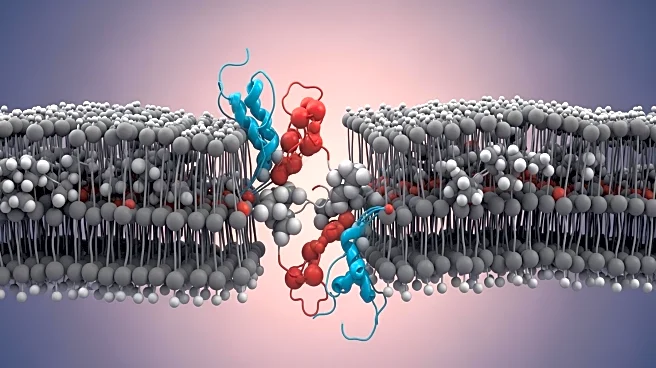What's Happening?
An editorial in Nature Chemical Engineering discusses the integration of biophysics research with chemical engineering principles. The publication emphasizes the importance of applying fundamental chemical engineering concepts,
such as thermodynamics and process control, to biological systems. The editorial highlights recent studies that demonstrate how chemical engineering can transform biological complexity into predictable phenomena. Examples include research on synthetic cells with programmable interiors and studies on microtubule networks in microfluidic channels, showcasing the application of transport phenomena and reaction kinetics.
Why It's Important?
The editorial underscores the expanding role of chemical engineering in addressing challenges within biological systems and soft matter. By applying chemical engineering principles, researchers can gain new insights into biological processes and develop practical solutions for complex systems. This interdisciplinary approach has the potential to advance both fundamental understanding and practical capabilities in fields such as biomaterial design and cellular metabolism. The integration of biophysics and chemical engineering could lead to innovations in biotechnology and materials science, impacting industries and research areas focused on biological systems.
What's Next?
Nature Chemical Engineering encourages submissions that apply chemical engineering principles to biophysics research, aiming to publish work that advances both fundamental understanding and practical applications. Future editorials will address different research areas, providing guidance for authors on the scope and criteria for submissions. The journal's commitment to interdisciplinary research may foster collaborations between chemical engineers and biophysicists, leading to new discoveries and technological advancements.
Beyond the Headlines
The editorial highlights the evolving definition of chemical engineering and its application to emerging domains. It raises questions about the boundaries of chemical engineering and the potential for interdisciplinary research to redefine traditional frameworks. The discussion may inspire researchers to explore new intersections between chemical engineering and other scientific disciplines, driving innovation and expanding the scope of chemical engineering research.











